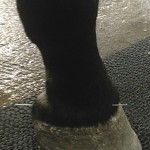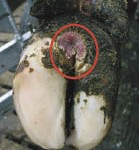Most horse owners will at some time encounter an emergency. Recognizing a true veterinary emergency and knowing appropriate first aid care until the veterinarian arrives can substantially improve the equine patient’s outcome. Colic is the most common cause for emergency calls. Colic is a broad term which describes abdominal pain or “pain in the belly.”






